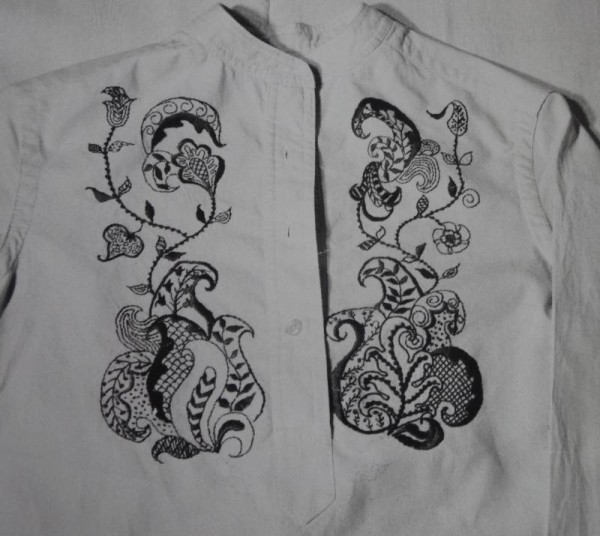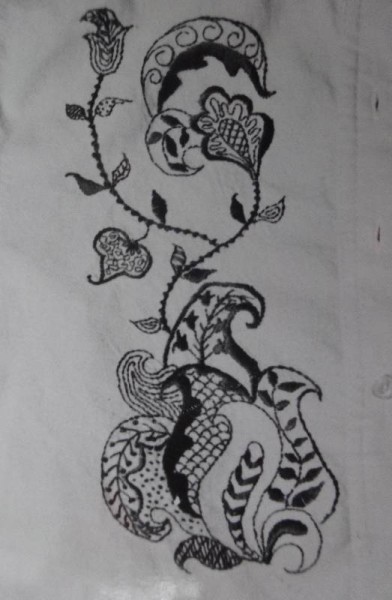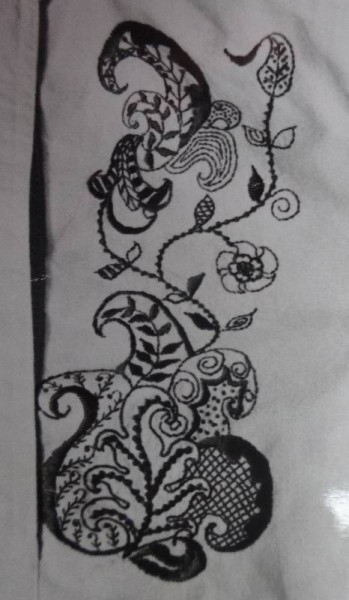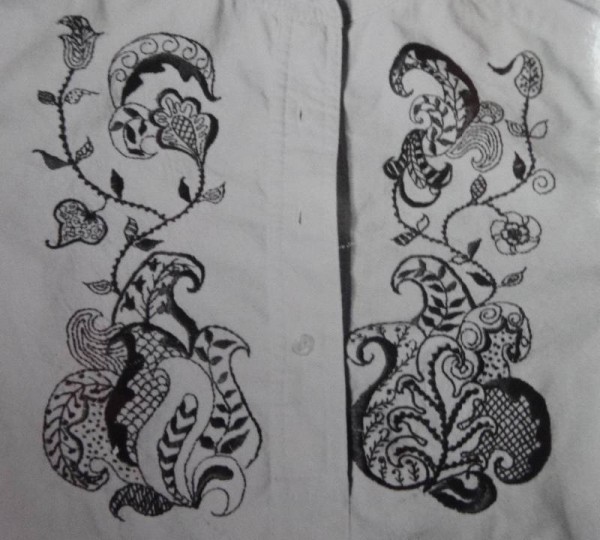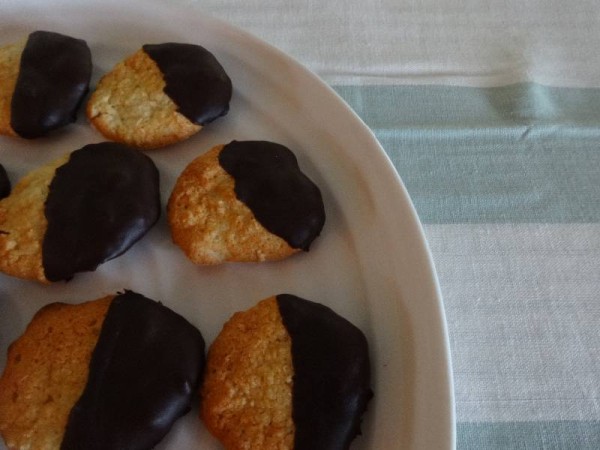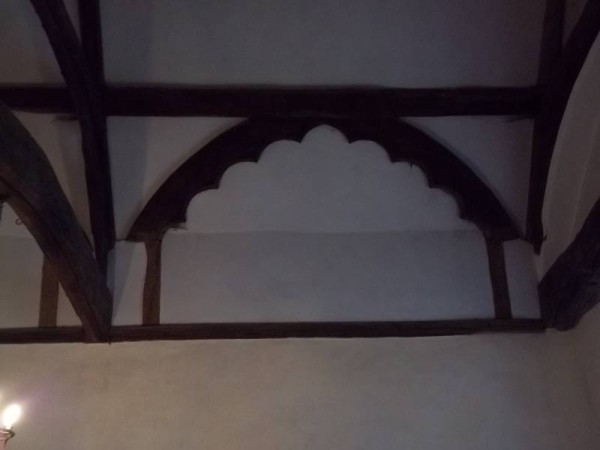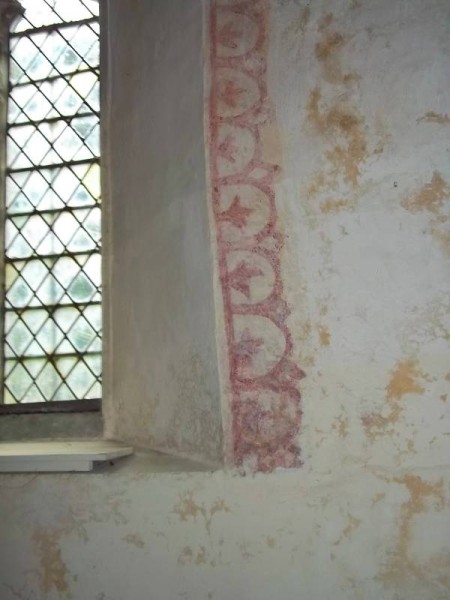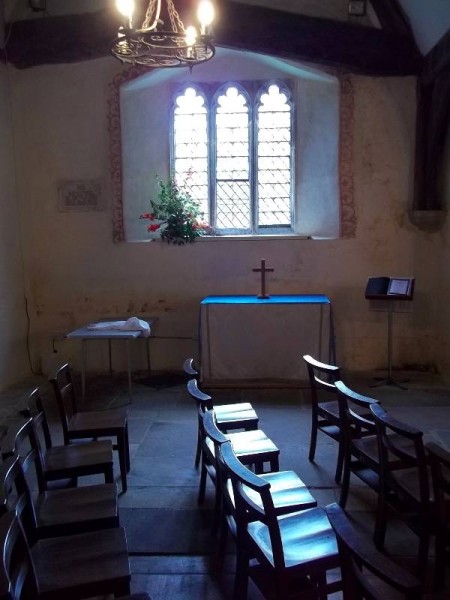Rummaging through box files recently, I came upon the above photograph, taken long ago, longer than I care to work out accurately. I have no idea what became of the above shirt or when I last saw it although I can remember doing the embroidery. Strangely enough, it might actually have been wearable now as big, bold, slightly menacing foliage motifs are once again fashionable. Worn with a pair of jeans, it would make quite an impact. So I was pleased to see the photograph and thought it would make a nice short blog post while I’m so busy on the altar cloth.
Blackwork is often referred to as Spanish blackwork from its supposed association with Katharine of Aragon. Certainly the dramatic contrast of black thread on white linen looked at its best next to the milk white skin and dark hair more often seen on a Spanish lady than on her English counterpart. But the truth is such embroidery was known in England before this. Chaucer in the Canterbury Tales describes the dress of Alison, the miller’s wife in the following way. “Of white, too, was the dainty smock she wore, embroidered at the collar all about with coal-black silk, alike within and out.”
However, the design on the shirt above has a definite Jacobean feeling. Blackwork in the early C17th has become a much more flamboyant and overblown style, the dainty lines on Alison’s smock having given way first to embroidered single flowers still obviously recognisable botanically (as on my Elizabethan jacket here though in black, not colour) through to the sort of fantastical foliage imagined above. Along with bigger and more elaborate leaves, the design also became more all enveloping until whole paniered skirts, bed curtains and hangings became so densely embroidered you could scarcely see the white linen beneath. Get closer to such work, however, and the stitchery is to be wondered at – minute speckling stitches providing shading in one place while other areas are worked in tiny geometric patterns on counted thread. My eyes are just not up to this now.
The stitches I have used are backstitch, stem stitch, fly stitch, couching, french knots, a sort of double knot (coral stitch?) and my favourite, satin stitch. English blackwork has in general not survived as well as the Spanish because the former contained more unstable iron in its composition which ate away at the thread. Black dye is notoriously difficult to stabilise, either turning a browny shade or going green. When some of my children wore black sweatshirts to school I was forever refreshing the ‘colour’ by throwing a packet of Dylon machine dye into the washing machine to revive them from their increasing drabness. Some Oxford dons prize their ancient academic gowns which have turned a dull forest green after year’s of exposure to the light (suggesting the colour, and probably presence, of mould of the sort found on a half full coffee cup found under a teenager’s bed). Sadly, my husband decided he couldn’t afford a wool cassock, and I’m somewhat loathed to admit that the terrible polyester monster he invested in has stayed as black as a starless night in the vicarage back garden (still no dry cleaning bills, straight into the washing machine and even at 60 degrees it emerges intact). Now I think about it, embroidering in white has far fewer associated problems, so I shall return to my altar cloth revived and refreshed.
This morning a green woodpecker was busy at work in the line of trees at the end of the garden – just the hammering, not yaffling and not visible.

